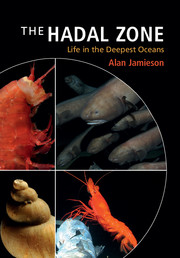Part I - History, geology and technology
Published online by Cambridge University Press: 05 February 2015
Summary
Introduction
The history of hadal science is full of the legacies of inquiring scientists who dared to explore the unknown and push the boundaries of the seemingly impossible in order to satisfy human curiosity for the natural world. The story is equally fraught with academic minds who, in their time, publicly deemed impossible many of the fundamental facts about the deep sea that are now taken for granted. For example, deep-sea biologists had to contend with the infamous statement of Edward Forbes who claimed that life did not exist at depths greater than 600 m below sea level (Forbes, 1844). Similarly, over 100 years later, Pettersson (1948) also expressed doubt as to the existence of life deeper than 6500 m, ironically on the eve of the discovery of life at 7900 m (Nybelin, 1951). Challenging the likes of Forbes may indeed have inspired the pursuit of life to deeper than 600 m and may ultimately have led to the discovery of life at nearly 11 000 m, full ocean depth. Around this time, hydrologists navigating the seas discovered areas of ocean that were deeper than ever thought possible. These deep areas, now recognised collectively as the ‘hadal zone’, are extremely deep trenches, located at tectonic plate boundaries. However, even in the mid-1900s, the theory of plate tectonics and continental drift was still disregarded by many academics. In 1939, on the subject of plate tectonics and continental drift, the well-known geologist Andrew Lawson voiced the then current opinion of many when he said; ‘I may be gullible! But I am not gullible enough to swallow this poppycock!’ (Hsu, 1992).
- Type
- Chapter
- Information
- The Hadal ZoneLife in the Deepest Oceans, pp. 1 - 2Publisher: Cambridge University PressPrint publication year: 2015



